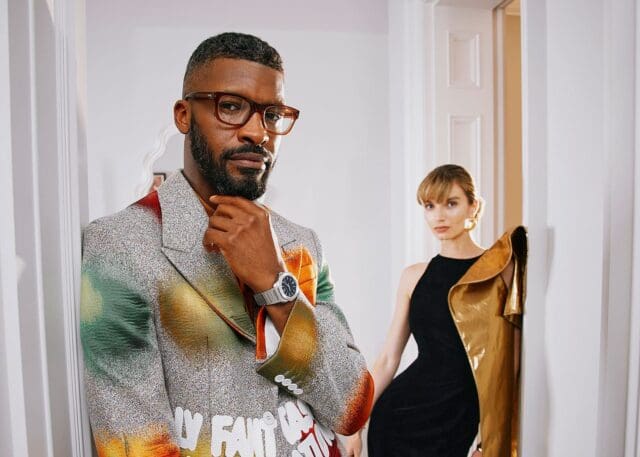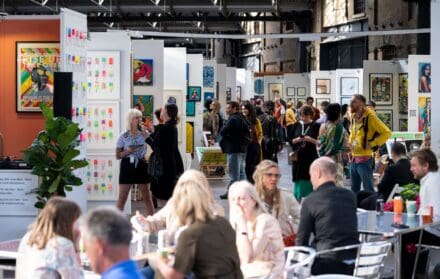
Why Instagram is no longer about proper photography
Instagram is fine for quick snaps, but for photographers working with medium or large-format cameras, a screen that fits in your palm will never do their work justice
The lasting effects of Instagram – which celebrated its 10th anniversary in 2020 – on the world of photography are dramatic. In tandem with the rise in quality of mobile phone cameras, Instagram has democratised image-making. No longer do you require an expensive camera body, an assortment of lenses and a photography degree to produce great-quality photos. All you need is a modern phone and an internet connection.
Instagram is good for many things. There is a growing body positivity movement on the platform, with accounts like @i_weigh and @freeda_en promoting healthy thinking and accurate representation of women. There is @beauty.false, which calls out celebrities and influencers who over-edit their photos, aiming to shed light on the unrealistic beauty standards that are promoted online. There is #burgerporn, the Kylie Jenner-beating @world_record_egg (current like count: 54.9 million) and @the_80s_interior, a page dedicated to ‘rooms of the eighties’.
View this post on Instagram
But what if you want to use Instagram as a tool to discover and appreciate photography as an art form? The app was born as a photo sharing tool after all, even if it now prioritises advertising, e-commerce and Reels – its answer to TikTok. Does Instagram still satisfy photography enthusiasts?
In short, it does and it doesn’t. Instagram is a very important tool for photographers both new and established. It’s often the first place people go when looking someone up, as it’s more dynamic than a website or static portfolio. It gives us the chance to get a behind-the-scenes look at a photographer’s processes, something that would have been impossible 15 years ago. Magnum legends, such as Bruce Gilden and Alex and Rebecca Norris Webb, have previously taken to Instagram Stories to discuss their work and young photographers, like Cian Oba-Smith, have done Q&As shedding light on their practice.

But when it comes to looking at actual photos, Instagram is by its very nature incredibly limited. There’s the compression element, with every photo being squeezed of its resolution, inevitably reducing the impact of the original. The limiting screen size of mobile phones is, of course, an issue as well. Instagram is fine for quick snaps, but for photographers working with medium or large format cameras, a screen that fits in your palm will never do their work justice.
View this post on Instagram
At risk of sounding old fashioned, there is something to be said for physical print as well. In the same way that people often prefer reading a book to a Kindle, a screen will never be a stand in for holding a high-quality print and really dissecting a photograph in the way it was intended. Instagram isn’t built to allow for the slow appreciation of the finer details of a photo. The whole point is that you scroll, double tap and repeat, increasing the the impressions of the platform’s advertisers and lining Instagram’s pockets in the process.
So where do you look if you want to seek great photography, both new and old? The easy answer is to turn to print publications. If Instagram is the movie trailer, giving you a hint at what’s on offer, a photobook is the cinematic experience, allowing you to get fully immersed in a powerful story with every turn of the page. Whether in a traditional photobook or in the form of a contemporary photography-based magazine, there is so much content out there waiting to be discovered the old way, and it’s infinitely more satisfying than endlessly scrolling your feed.
Printed photographs have an almost 3D-like quality to them that can never be replicated digitally, through Instagram or otherwise. And, with most of us spending a vast amount of time online this year, why not go analogue and invest in the publishing industry while you do so?
Here are five titles to get started with…
Brooklyn: The City Within, Alex Webb and Rebecca Norris Webb

The latest collaborative project from Alex and Rebecca Norris Webb, Brooklyn: The City Within, sees the pair turn inward, dissecting the borough they call home. Their styles are visually quite different, with Alex known for his street photography and bright, contrast lighting, while Rebecca often turns her lens to nature, favouring soft tones which give her work an almost dream-like feel. These combine in the book to paint a beautiful picture of contemporary Brooklyn, one of the most culturally diverse places in the USA.
Brooklyn: The City Within, Alex Webb and Rebecca Norris Webb, £26, Magma
Portrait of Britain Vol. 3, British Journal of Photography & Hoxton Mini Press

The third in an annual Portrait of Britain series produced by the British Journal of Photography and Hoxton Mini Press, this book features 200 portraits which aim to give an overview of 2020. Reflecting a year of drastic change, in which the Black Lives Matter protests and COVID-19 have changed the way we live, work and interact, each portrait is accompanied by stories which shed light on both individual and collective experience in what has been a momentous year. Portrait of Britain Vol. 3, £22.95, Hoxton Mini Press
Funland, Rob Ball

Known for his colourful photographs of the seaside, Rob Ball has shot everywhere from Margate to Coney Island. His book, Funland, focuses specifically on the UK, with playful shots of beaches, cafes and amusements that’ll trigger nostalgia in anyone that spent time by the sea as a child. Ball shines a light on the design quirks of seaside towns – bright lights, kitsch facades and intricate carpets fill his pages – hinting at the never-ending quest for fun across Britain’s coasts.
Funland, Rob Ball, £30, Hoxton Mini Press
Notting Hill Carnival 1974, Chris Miles

Photography books can be expensive but, thanks to publishers like Cafe Royal Books, they don’t have to be. CRB is known for its A5-sized mini books which are printed on high quality photo paper and priced incredibly accessibly. This tome on Notting Hill Carnival is a case in point – photographer Chris Miles’ black and white shots of the 1974 carnival show the passion and excitement of the annual celebration, which took place digitally this year for the first time ever.
Notting Hill Carnival 1974, Chris Miles, from £6.50, Cafe Royal Books
Splash & Grab magazine

The other way to support the photography publishing industry is by buying print magazines. There are a number of independent publications championing new photography, one of which is Splash & Grab. Shunning advertising and giving space to new and established names, Splash & Grab’s latest issue features projects looking at notions of memory by the likes of Emily Graham, Isabel Okoro, Yumna Al-Arashi and more.
Splash & Grab Issue 5, £10, Splash & Grab
Read more: Influential black artists that confront race and systemic oppression within their work










